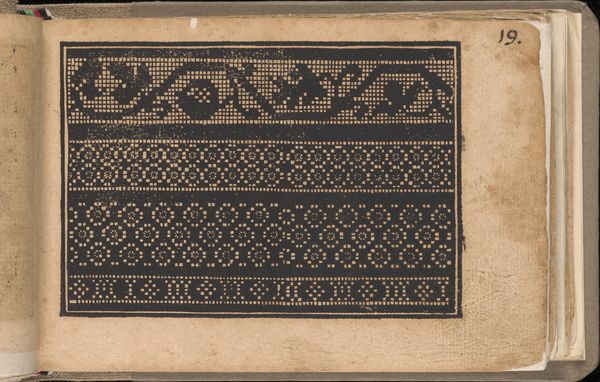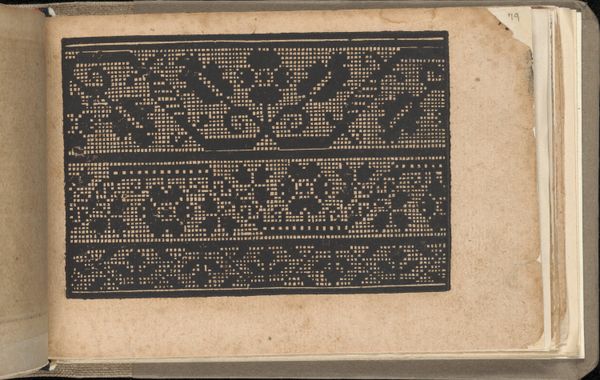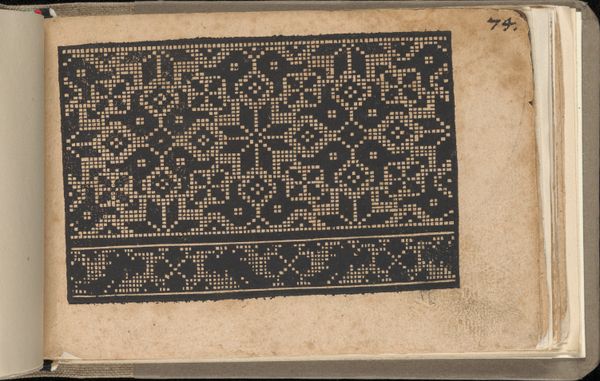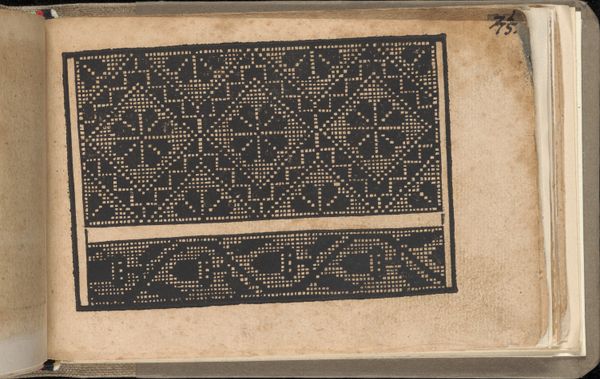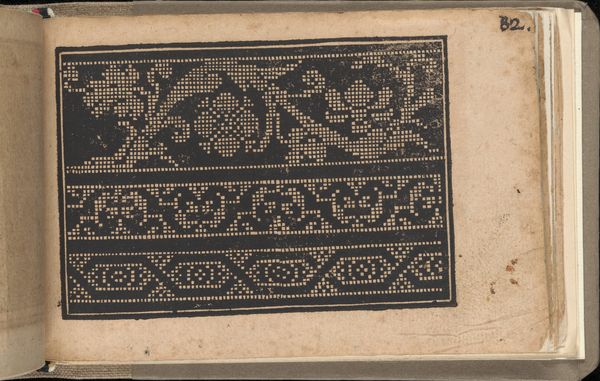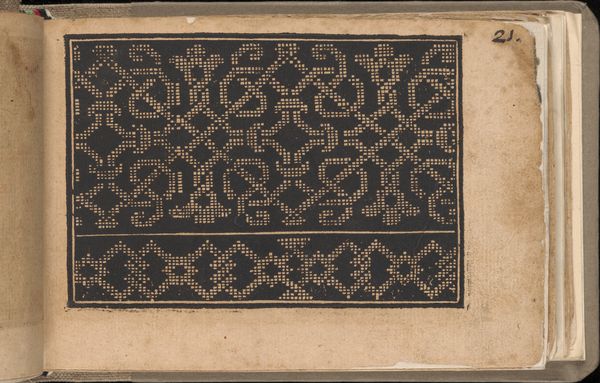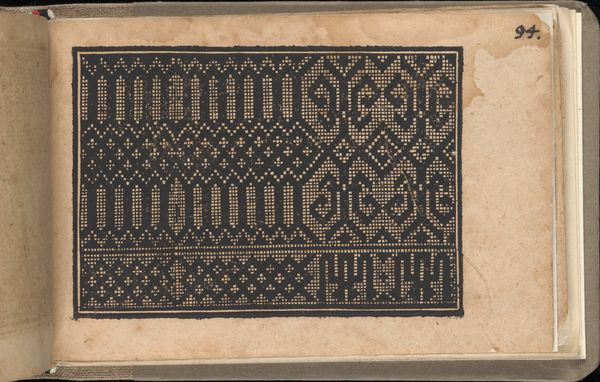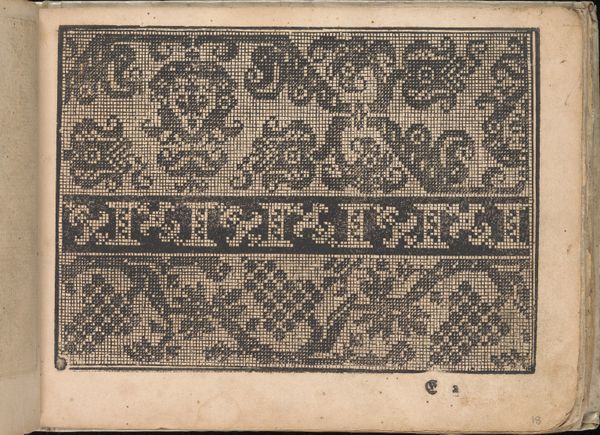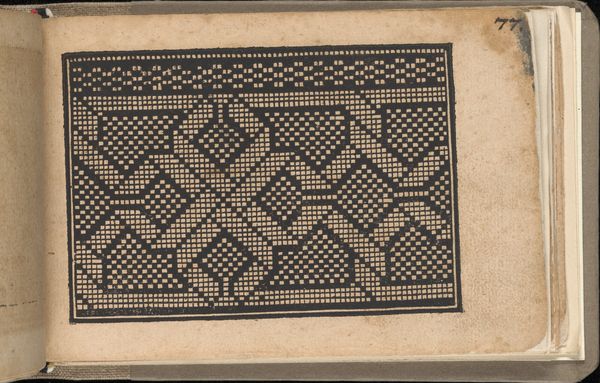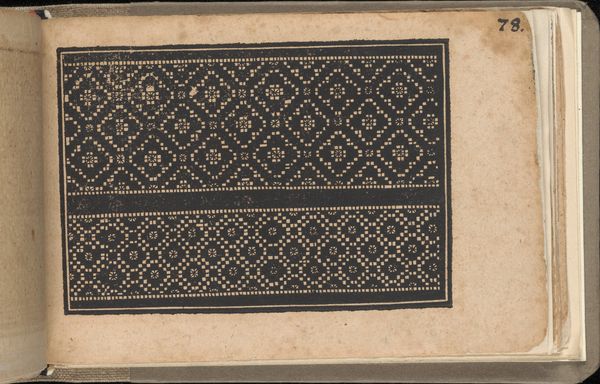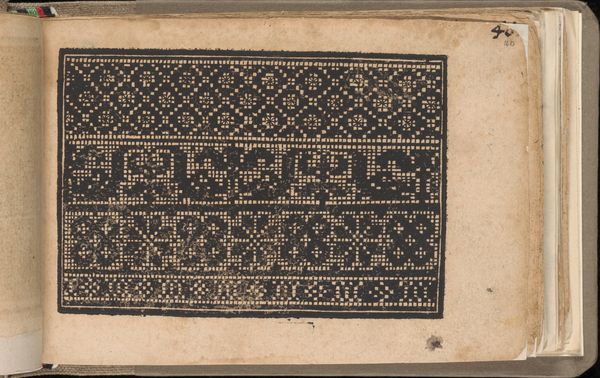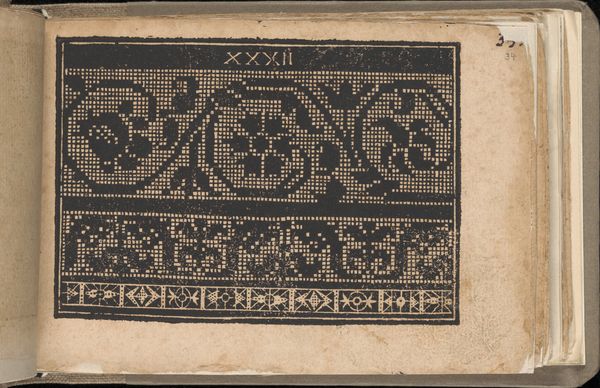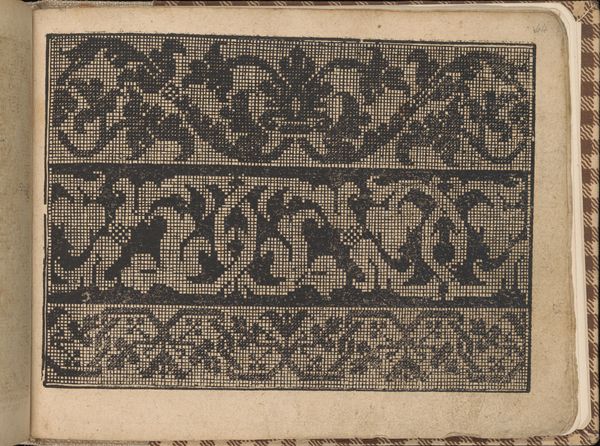
drawing, graphic-art, ornament, print, paper, engraving
#
drawing
#
graphic-art
#
ornament
# print
#
paper
#
11_renaissance
#
early-renaissance
#
engraving
Dimensions: Overall: 4 1/2 x 6 11/16 in. (11.5 x 17 cm)
Copyright: Public Domain
Curator: This is an image of plate 71r from Sigismundus Latomus's "Schön newes Modelbuch," or "Beautiful New Pattern Book" made in 1608. It is an engraving on paper from the Early Renaissance and is now housed at the Metropolitan Museum of Art. Editor: My initial impression is the remarkable level of detail! It seems almost meditative in its meticulousness, each tiny dot and line so deliberate, so…hand-wrought. Curator: Indeed, pattern books such as this one played a crucial role in disseminating design ideas across Europe. This was at a time when printed images facilitated the transmission of designs in ways never before imagined, transforming craft and production methods. Editor: You can almost feel the labor involved! Consider the engraver, carefully carving each element. The paper, too, speaks to this history, with its texture and chain lines evidencing the pulp production and material making that connects to class, workshops, and markets. It reveals a vast network of work. Curator: Precisely, these weren't high art objects intended for display in the modern sense, but working documents, accessible tools that facilitated the production of textiles, embroidery, and other decorative arts. We might consider them forerunners of today’s mass-produced templates. Editor: It strikes me how something intended for practical use can now possess such aesthetic appeal. What was once a means of replication now holds value as a singular artifact displaying the time, work, and resources needed to make the engraving. Curator: The design motifs are very interesting. You see the geometric shapes. They also suggest an intellectual milieu, which reflected specific values and interests within its cultural setting, influencing design and tastes throughout the area. Editor: Thinking about consumption: Who had access to pattern books like this, and what social class used and produced this printmaking? This isn't just about the image itself; it reflects historical socioeconomic dynamics. Curator: The dissemination of these design elements facilitated a sharing of style. This is an intersection of craft, commerce, and social influence that's quite fascinating to analyze. Editor: Yes, tracing its history, this little pattern offers a wide range of things, from workshops and individuals to distribution routes. Curator: Seeing this image has really reminded me of the powerful social narratives embedded within these functional art objects. Editor: And for me, I think it amplifies the importance of looking at material culture as an invaluable source of social histories.
Comments
No comments
Be the first to comment and join the conversation on the ultimate creative platform.

